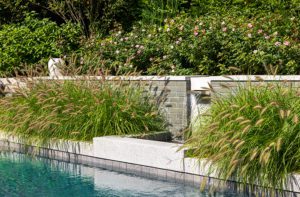Versailles Revisited
March 23, 2009
Text by Erin Marvin Photography by courtesy of the Preservation Society of Newport County
It was a time of horse racing and baronesses, of high society and industry, of grand philanthropic projects and lavish parties. This was the Gilded Age at its height, late nineteenth-century America. And if royalty was measured in gold and silver, the kings and queens of them all may have been the Vanderbilts.
In 1888, William Kissam Vanderbilt threw his energy—and his money—into building “the very best living accommodations that money could buy” on the coast of Newport, Rhode Island.
Famed architect Richard Morris Hunt designed the Bellevue Avenue mansion that took three years, 500,000 cubic feet of marble and $11 million to complete. Hunt trained at the École des Beaux Arts in Paris, and the home's design reflects many elements of classic Beaux Arts style. Hunt was said to have found inspiration in the Petit Trianon at Versailles, most evident in the home's refined exterior, Corinthian pilasters and balustrades.
The stone palace's white marble exterior and classical columned portico stood in stark contrast to the neighboring homes constructed along Newport's cliffs decades earlier by wealthy Southerners. At its completion, Marble House was the grandest “cottage” of them all, and remained so until William's brother, Cornelius, built the Breakers a few years later, setting off a competition that resulted in the famous Bellevue Avenue row of mansions.
Visitors entered Marble House through an elaborate, sixteen-foot-high entry of glass doors with bronze grills, monogrammed with “W.V.,” that cost William Vanderbilt $50,000 apiece and weigh more than a ton.
The Grand Salon dazzles with walls covered in one-quarter-millionth-inch-thick, twenty-four-karat gold leaf applied by hand, lending it the nickname, “The Gold Room.” Throughout the room images of Greek and Roman gods symbolize the attributes of Beauty, Wealth and Power so fundamental to the Vanderbilts' perception of themselves.
Here and throughout the house, the decor incorporates the mask of Apollo. A favorite motif of Vanderbilt's wife, Alva, it was the emblem of King Louis XIV, the Sun King, who grandly ruled France from his own court at Versailles two centuries before the Vanderbilts reigned over Newport society.
The Sun King himself stands guard in the splendid dining room in an imposing portrait that looks out from above the fireplace. The room, designed by Parisian decorator Jules Allard, has walls of Algerian rose-colored marble that gleamed in the afternoon light as the Vanderbilt family gathered to lunch and converse in French. The family sat on dining chairs of solid bronze covered in gold leaf weighing seventy-five pounds and requiring a footman to move them.
In the Medieval France–style Gothic Room, the decor, while still flamboyant, switches to a more severe tone. The highly structured room, made up of architectural elements created in France and shipped to Newport, is filled with stiff, uncomfortable furniture and has an ornate ribbed ceiling with twin gold chandeliers. Detailed oak paneling circles the walls and pointed arches stand guard around the massive limestone chimney piece.
Alva's own bedroom, a pale lilac color that belies her strong personality, has silk lampas wall covering and ornamental cherubs, nymphs and gold garlands throughout. Above her throne-like bed hangs an eighteenth-century Pellegrini painting of the Greek goddess Athena that originally hung in a Venetian palace before being shipped to Marble House.
When the fifty-two-room Marble House was finished, in 1892, William gave it to his wife for her thirty-ninth birthday. Though money could buy luxury, it couldn't buy love. William and Alva divorced a mere three years later, spending less than a handful of summer seasons together in Marble House.
EDITOR'S NOTE Operating hours vary throughout the year, though Marble House is generally open daily (except for Thanksgiving and Christmas). 596 Bellevue Ave., Newport, Rhode Island, (401) 847-1000.
Share
![NEH-Logo_Black[1] NEH-Logo_Black[1]](https://b2915716.smushcdn.com/2915716/wp-content/uploads/2022/08/NEH-Logo_Black1-300x162.jpg?lossy=1&strip=1&webp=1)













You must be logged in to post a comment.